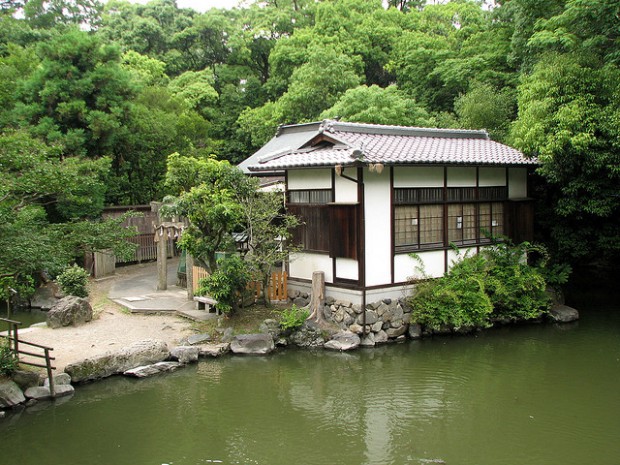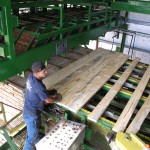The “Honest” Home, And What It Has To Do With Idaho Timber Exports
Our recent story on Japanese homebuilding preferences and how they’ve helped one North Idaho sawmill led me to a guy named Roger Williams. He’s an architect based in Seattle, but he’s done a lot of work in Japan. He’s made dozens of trips there over the years.
I was trying to understand why there’s such a focus on wood quality in Japanese home construction. I wondered about the origins of that emphasis, and what it has meant for the Japanese housing market.
As it turns out, Williams was involved in a curious effort mounted by the U.S. Department of Agriculture, state commerce departments, and western wood products associations in the 1990s. They wanted to export American-style home construction, creating a market for U.S. timber products and providing cheaper Japanese housing, all in one fell swoop. Japanese homes have long been much more expensive than homes in the U.S. They tend to be custom-built from high-quality materials. American homes rely on the trusty 2×4.
Mark Calhoon is now a senior managing director with the Washington State Department of Commerce. In the ’90s, he worked on strategies for marketing Washington wood products to Japan.
“The traditional Japanese home is based on a metric module around post-and-beam construction, which is a good deal more expensive than the 2×4 system,” Calhoon explains. “A lot of our push was to show Japanese builders and architects that the 2×4 system could be cost effective.”
And what a push it was. Calhoon says the U.S. government mounted a successful effort to modify Japanese building codes and regulatory requirements to allow 2×4 construction. One example: Japan’s restrictive fire codes historically didn’t allow multifamily units to be built from wood. That rule changed.
Still, the effort to export American-style home construction didn’t take hold. At least, not in the way Calhoon and others had hoped.
“I think we ended up seeing a lot of Westernized Japanese people — people who had lived overseas and were familiar with the U.S. lifestyle — they tended to be the primary market for these U.S. style homes. There were several different niches we got into and that was one,” he says.
They’d aimed for more broad-based popularity. “The naive goal, going in, was that based on economics and a price-quality proposition we could have pretty strong market penetration,” Calhoon says.
Why the hangup? Why was it so hard to displace the entrenched style of home construction with American-style homes?
Architect Williams isn’t sure this is the definitive answer, but he points out how significant the differences are between the American and Japanese modes of homebuilding.
In the U.S., most homes are made of a stud frame sheathed in plywood and bolted to a concrete foundation. Traditional Japanese post-and-beam construction uses larger pieces of wood spaced further apart, infilled and covered over with stucco. Often the lumber is left exposed.
“One of the nice thing about our system is that it can be any aesthetic,” Williams says. “In a lot of American frame construction, the frame is one thing, and the decoration is something different. That might have something to do with why it wasn’t as successful as people thought it might be in Japan.”
In Japan, Williams explains, the whole aesthetic of the home derives from its post and beam structure.
“American architects appreciate Japanese architecture for that honesty of the relationship between the utility and the aesthetic,” he says. “We call it honesty. There’s a clarity: the structure, the utility, and the aesthetic are all one.”
Idaho Forest Group’s exports to Japan reflect the Japanese market’s reluctance to embrace U.S.-style construction. Their main export is a large, high-quality piece of wood, used in traditional post-and-beam homes.


